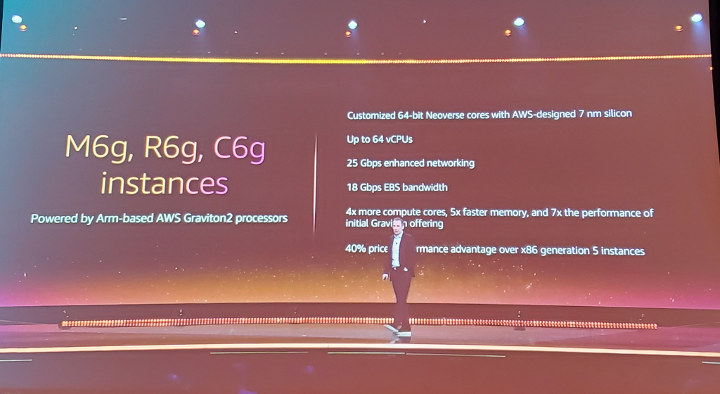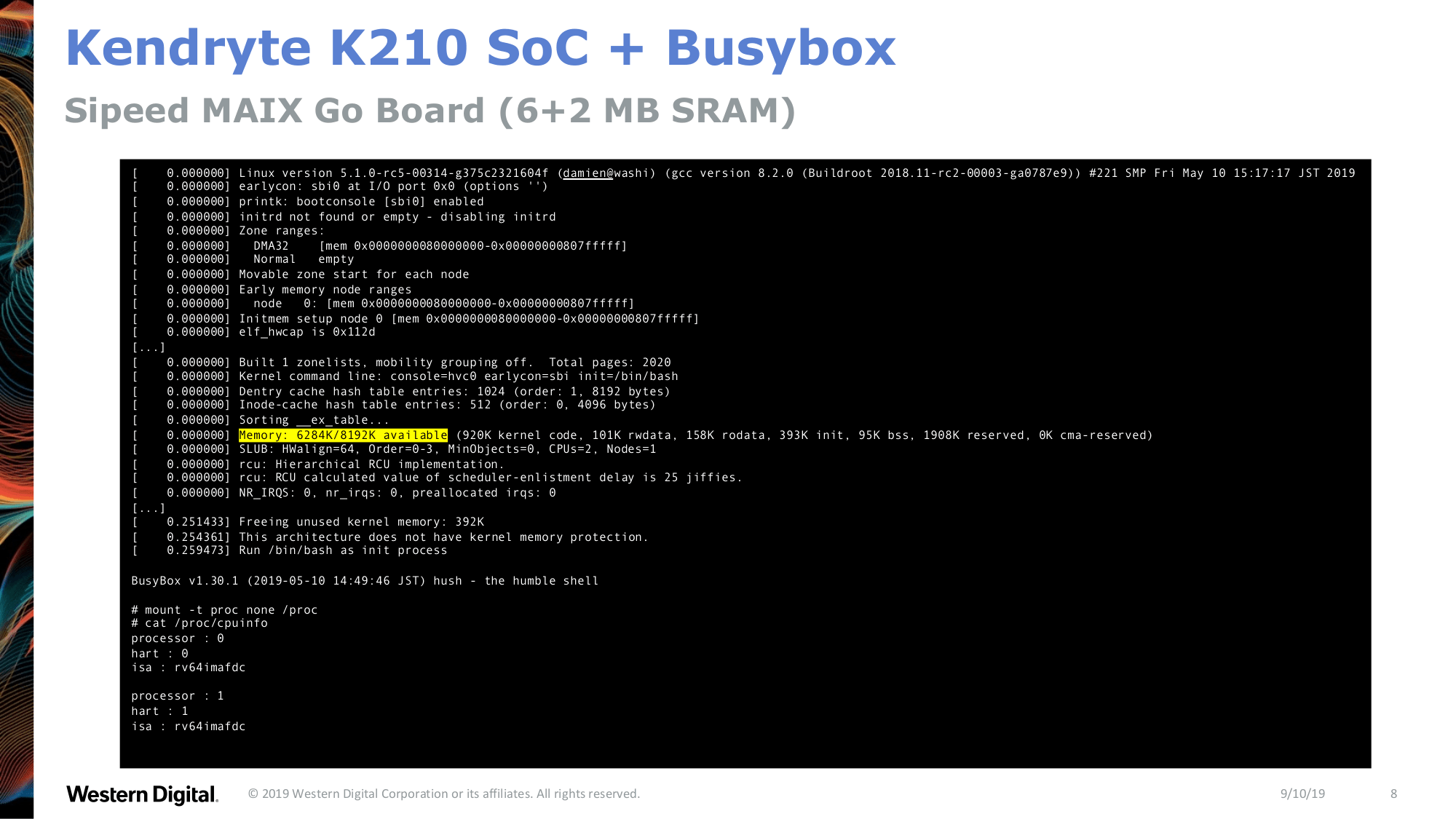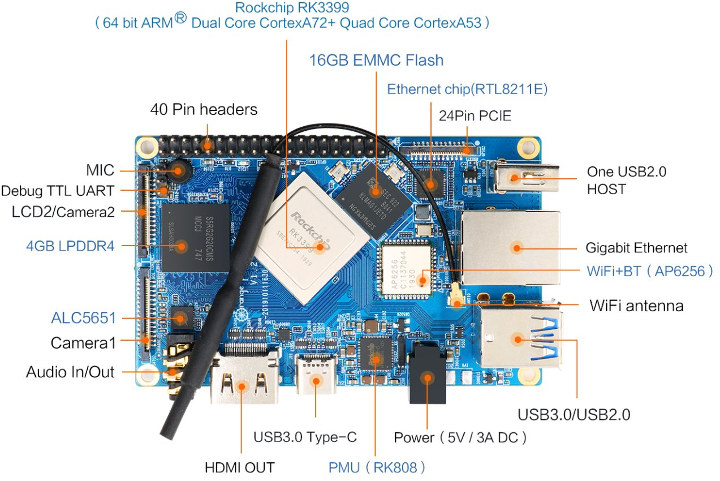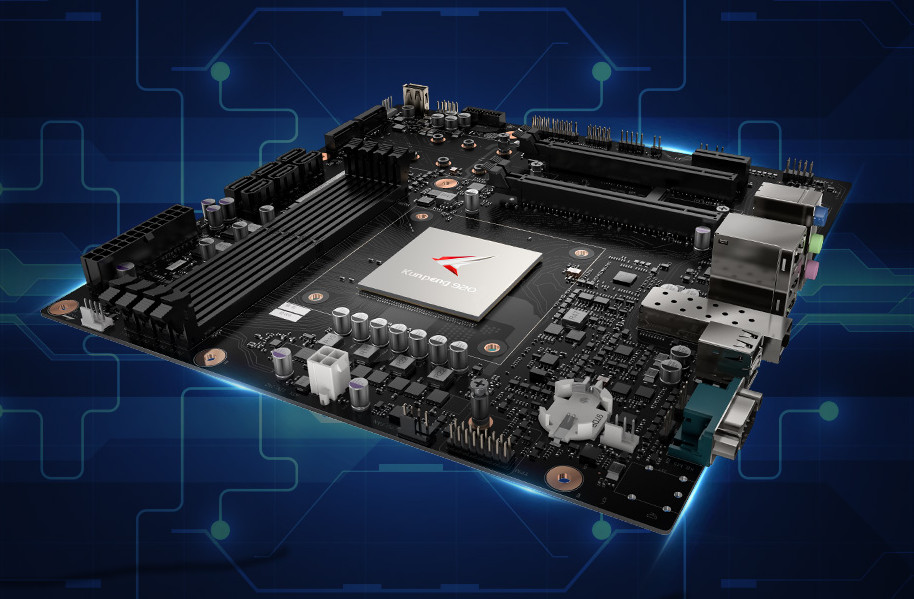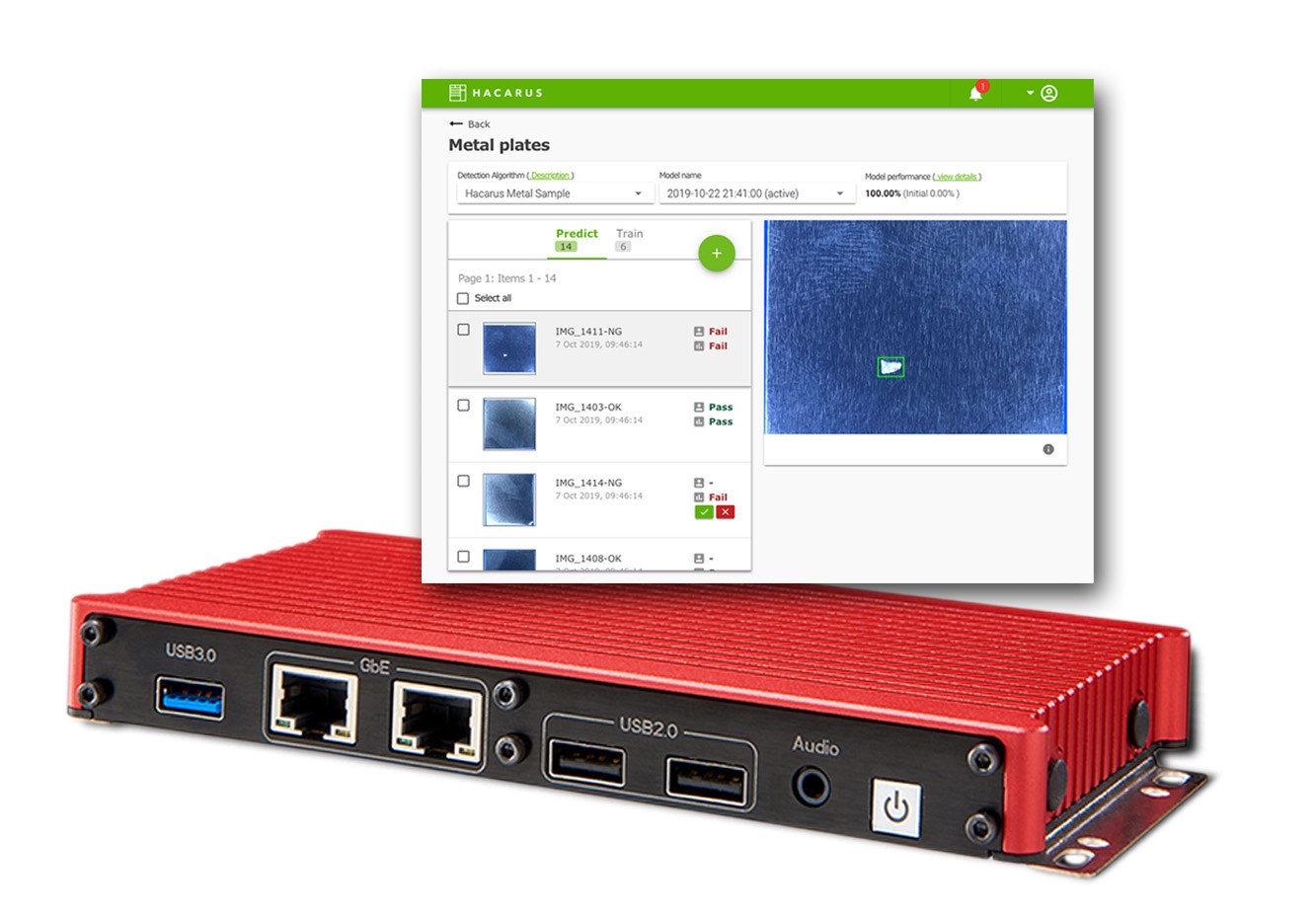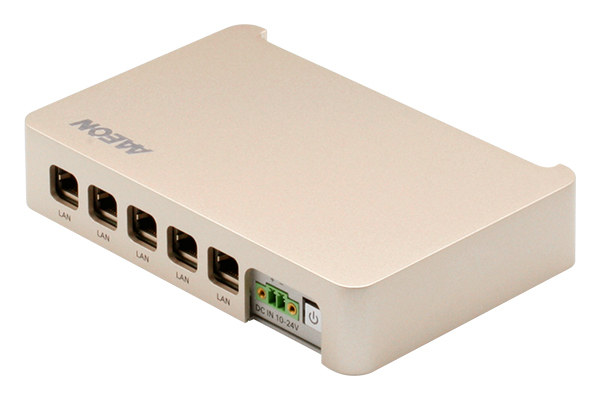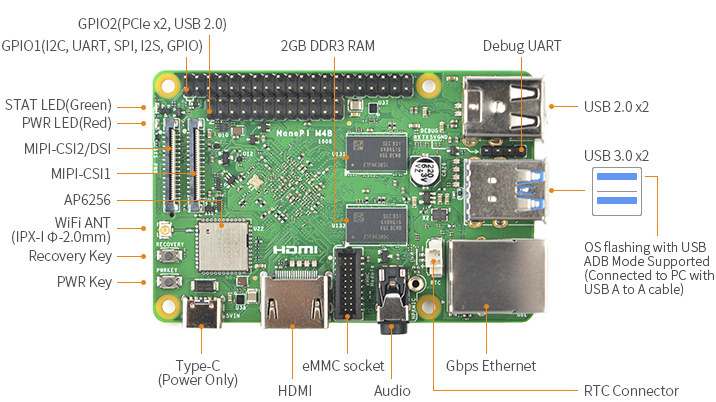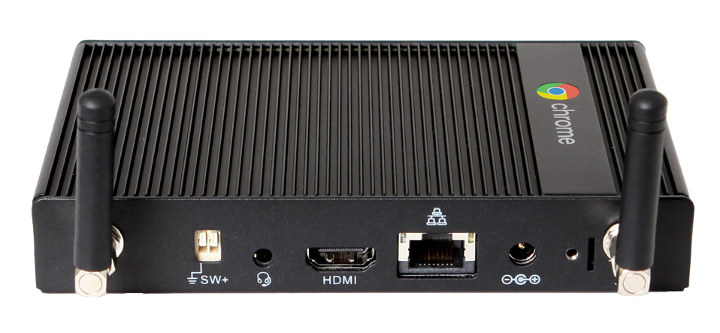Last year Amazon introduced their first 64-bit Arm-based ECS2 “A1” instances which were found to deliver up to 45% cost savings over x86 Instances for the right workloads. A few months ago, AWS (Amazon Web Services) provides a new offering with bare-metal A1 instances, and with re:invent 2019 now taking place the company has unveiled AWS ECS2 6th generation Arm instances (which they did not call A2 instances yet) powered by Graviton 2 processor comprised of custom Arm Neoverse N1 cores and promising up to 7x the performance of the original A1 instances. There will be three types of Graviton2-powered EC2 instances with the d suffix indicating NVMe local storage: M6g and M6gd for General Purpose workloads (application servers, mid-size data stores, microservices, and cluster computing) with 1 to 64 vCPUs and up to 256 GB of memory. C6g and C6gd for Compute-Optimized workloads (high-performance computing, video encoding, gaming, and […]
Western Digital Made RISC-V Linux & BusyBox Boot on Sipeed Maix Go Board
The other day we wrote about Getting Started with Embedded Linux on RISC-V in QEMU emulator and noted that Linux capable RISC-V hardware is currently fairly expensive. We also mentioned there was work on porting uCLinux to Kendryte K210 RISC-V processor on boards such as Sipeed Maix board. The processor only comes with 8MB RAM, and does not feature an MMU (Memory Management Unit) so what you’d be able to do on the board would be limited, and for instance, a desktop environment is clearly impossible on the platform. NOMMU support also requires some extra work, and in Linux 5.4 we saw only of the changes was “SiFive PLIC IRQ chip modifications, in preparation for M-mode Linux”. The slide above is extracted from the “RISC-V NOMMU and M-Mode Linux” presentation by Damien Le Moal, Western Digital at the Linux Plumbers Conference 2019 last September. It explains M-mode support is better […]
Orange Pi 4/4B Board with RK3399, 4GB RAM Launched for $50 and Up
Orange Pi 4 is yet another Rockchip RK3399 SBC with 4GB RAM, while Orange Pi 4B adds Gyrfalcon Lightspeeur 2801A AI Accelerator. Both models were announced about 10 days but were not for sale just yet. The company has now launched the board on both Aliexpress and their newly opened Amazon store with three options: Orange Pi 4 with no eMMC flash – $49.90 Orange Pi 4 with 16GB eMMC flash – $59.90 Orange Pi 4B with 16GB eMMC flash, Gyrfalcon NPU – $69.90 Quick reminder of Orange Pi 4/4B specifications: SoC – Rockchip K3399 hexa-core big.LITTLE processor with two Arm Cortex A72 cores, four Cortex A53 cores, and an ARM Mali-T860 MP4 GPU with support for OpenGL ES 1.1 to 3.1 support, OpenVG1.1, OpenCL and DX 11 System Memory – 4 GB LPDDR4 Storage – Optional 16 GB eMMC flash, micro SD card NPU (Orange Pi 4B only) – Gyrfalcon […]
Huawei Kunpeng Desktop Board is Powered by Kunpeng 920 Armv8 Server Processor
Huawei Kunpeng 920 is an Armv8 server SoC with up to 64 cores that can be found in the company’s TaiShan series servers. But the company has now designed “Kunpeng Desktop Board” featuring the quad or octa-core version of Kunpeng 920 SoC, in order to create Arm-powered desktop computers. Kunpeng Desktop Board (model D920S10) preliminary specifications: Processor – Kunpeng 920 processor with 4/8 cores at up to 2.6 GHz System Memory – 4x DDR4-2400 UDIMM slots for up to 64 GB RAM Storage – 6x SATA 3.0 hard drive interfaces, 2x M.2 SSD slots Connectivity – 2x LOM (LAN on Motherboard) NIC supporting Gigabit Ethernet network ports or optical ports USB – 4x USB 3.0 and 4x USB 2.0 ports Audio – Combo with 3x 3.5mm audio jacks Serial – DB9 connector Expansions – 1x PCIe 3.0 x16, 1x PCIe 3.0 x4, and 1x PCIe 3.0 x1 slots LOM Network […]
Hacarus Embedded AI Computing Kit Leverages Sparse Modeling Technology
AI training often requires thousands of samples to become accurate, and it can be costly and time-consuming, for example, if you want to train a model to detect manufacturing defects you’d need to provide images with both defective samples and good samples. Japanese AI experts at Hacarus have been working on a solution called Sparse Modeling which requires about 50 samples or even less for training, and worked with Congatec to provides an embedded AI computing kit leveraging the technology. Sparse Modeling Technology Hacarus does not go into great detail but explains Sparse Modeling technology is using a data modeling approach that focuses on identifying unique characteristics, in a way that humans recognize friends and family without having to look at everything from feet to head. That means algorithms based on Sparse Modeling do not need as much data as traditional AI solutions, leading to much smaller AI footprint suitable […]
AAEON BOXER-8220AI Embedded Box PC Features NVIDIA Jetson Nano, 5 Gigabit Ethernet Ports
AAEON has launched several AI Boxer-8000 series embedded box PCs based on Intel processors plus AI accelerator, or NVIDIA Jetson TX2. The company has now introduced a new model – BOXER-8220AI – based on NVIDIA Jetson Nano module, and equipped with five Gigabit Ethernet ports. AAEON BOXER-8220AI specifications: SoM (CPU/Memory/Storage) – NVIDIA Jetson Nano with quad-core Arm Cortex-A57 MPCore processor @ 1.43 GHz, 128-core Maxwell GPU. 4GB LPDDR4, 16GB eMMC flash or MicroSD card Video Output – HDMI 2.0 Connectivity – 5x Gigabit Ethernet ports USB – 4x USB 3.0 ports, 1x Micro USB to flash the OS Serial – 2x RS-232 Misc – Power button, recovery button, power LED Power Supply – 10-24V DC via 2-pin terminal block Dimensions – 154 x 101 x 30 mm Weight – 1 kg Temperature Range – Operating: -20°C ~ 60°C, according to IEC60068-2 with 0.5 m/s AirFlow; storage: -45°C ~ 80°C Storage […]
NanoPi M4B Rockchip RK3399 SBC Drops the USB 3.0 Hub, Adds Bluetooth 5.0, an ADB Switch
NanoPi M4 was launched last year (2018) as a Rockchip RK3399 SBC following Raspberry Pi 3B+ form factor with 2 or 4GB DDR3 RAM, and was followed by NanoPi M4V2 this September with 4GB LPDDR4 memory, and power & recovery buttons. FriendlyELEC has been working on yet another revision with NanoPi M4B mixing some of the features of M4 and M4V2 such as DDR3 memory and power & recovery buttons, but the biggest change is the removal of the USB 3.0 hub which allowed for four USB 3.0 port, and now the company is going native leveraging the two USB 2.0 interfaces and two USB 3.0 interfaces inside Rockchip RK3399 processor which should lower the BoM cost, and in some cases improve performance. NanoPi M4B specifications: SoC – Rockchip RK3399 big.LITTLE hexa-core processor with 2x Arm Cortex-A72 @ up to 2.0GHz, 4x Cortex-A53 @ up to 1.5GHz, a Mali-T864 GPU […]
AOPEN Chromebox Mini is Designed for Digital Signage and Kiosks
Most ChromeOS devices are designed for either the consumer or educational markets, but Google’s operating system can also be used for commercial applications such as digital signage. A cheap way to set up a ChromeOS based digital is to get a ChromeBit (around $100 used) and install one of the Digital Signage apps for the OS. But as I checked out Linux 5.4 changelog, I came across AOPEN Chromebox Mini (codename Fievel) powered by a Rockchip RK3288 processor and described as an “enterprise-ready” Chromebox for 24/7 operation as digital signage or kiosk. AOPEN Chromebox Mini specifications: SoC – Rockchip RK3288C quad-core Cortex-A17 processor @ up to 1.8GHz with Arm Mali-T764MP GPU clocked at up to 600 MHz System Memory – Dual-channel 4GB LPDDR3 Storage – 16GB eMMC 5.0 flash Video Output – HDMI up to 1080p60 Audio – 1x combo jack with Line out/Line in Connectivity – Gigabit Ethernet, WiFi […]


